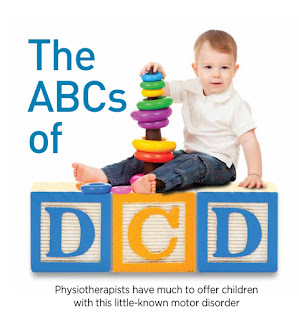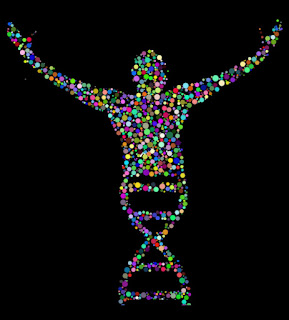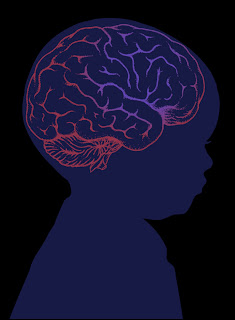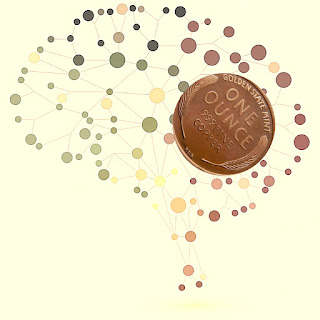A TALE OF EXAGGERATED REFLEXES - SPASTICITY ELUCIDATED!!!! BY DR. VANDANA PATEL (PT)
Spasticity is a stretch reflex disorder, manifested clinically as an increase in muscle tone that becomes more apparent with more rapid stretching movement. It is a common consequence of lesions that damage upper motor neurons causing upper motor neuron syndrome (UMNS).
“Spasticity is a motor disorder characterized by a velocity-dependent increase in tonic stretch reflexes (muscle tone) with exaggerated tendon jerks, resulting from hyper excitability of stretch reflex, as one component of the upper motor neuron syndrome”
Spasticity is also a length-dependent phenomenon. When the muscle is short a great resistance is met. Then, when the muscle lengthens, the resistance suddenly disappears.
Patho-physiology of spasticity:
To understand the patho-physiology behind spasticity, first we need to understand the normal stretch reflex.
Normal stretch reflex:
What happens when there is spasticity....??
There is exaggeration of the stretch reflex in spasticity which could be produced by two factors.
1. An increased excitability of muscle spindles . In which,passive muscle stretch in a patient with spasticity would induce a greater activation of spindle afferents with respect to that induced in a normal subject, of course considering a similar velocity and amplitude of passive displacements.
2. An abnormal processing of sensory inputs from muscle spindles in the spinal cord, leading to an excessive reflex activation of 𝛼-motoneurons. Some studies suggest that 𝛾-motoneurons hyperactivity and subsequent muscle spindle hyper excitability have a role in producing hypertonia. These indicate that spasticity is due to an abnormal processing in the spinal cord of a normal input from the spindles.
3. In healthy subjects, the voluntary output from the motor cortex activates the motoneurons targeting the agonist muscles through the Ia inter neurons and inhibits those innervating the antagonist muscles (reciprocal inhibition). In the UMNS, co-contraction happens due to the loss of reciprocal inhibition during voluntary command. This in turn affects the tone of the muscle and force generation capacity of a muscle.
4. The supra spinal control:
Primary impairments from an upper motor neuron lesion (UMNL) are usually due to the disruption of supra spinal control of descending pathways that control excitatory and inhibitory influences on proprioceptive, cutaneous and nociceptive spinal reflexes.
A powerful inhibitory mechanism in the bulbar reticular formation (bulb), an area immediately behind the pyramids (ventromedial bulbar reticular formation) can suppress any type of muscle activity, including stretch reflex activity.
Another system that provides the inhibitory influence on stretch reflex is corticospinal tract which originates from the betz cells located in primary motor cortex.
In normal individual these excitatory and inhibitory influences will be working simultaneously in a proper balance so stretch reflex work based on commands. But when there is any damage to any of these inhibitory influences the stretch reflex exaggerates.
Possible reasons for spasticity depending on damage:
1. Distruption of facilitatory corticobulbar fibres following any brain lesions. This in turn will inhibit the ventromedial reticular formation area from where the dorsal reticulospinal tract originates.
2. Incomplete spinal cord lesions cause spasticity when they destroy the dorsal reticulospinal tract sparing the medial reticulospinal tract.
Characteristics:
• Muscle tone increases with rapid movement of an arm or leg or quick change of body position
• Sudden contraction of a muscle that causes an arm or leg to either flex or extend
• Abnormal posturing of the arms or legs
• A series of rapid muscle contractions such as bouncing of the foot (clonus) when the ankle is dorsiflexed (This phenomenon is often more pronounced when the spastic muscle is tired after exercise)
• Exaggerated stretch reflex
• Scissoring or crossing of the legs when attempting to stand, transfer or walk
• Exaggerated tendon jerk responses.
• Positive babinski sign
• Released primitive reflexes
• Inhibition of movement
• Inhibition of longitudinal muscle growth
• Inhibition of protein synthesis in muscle cells
• Development of muscle and joint deformities
Changes overtime with spasticity:
• Changes in soft tissues leading to muscle stiffness, atrophy and fibrosis
• Disproportionate growth leading to contractures
• Contracture leading to deformities
• Pain
Pharmacological management:
1. Botulinum Toxin A : Blocking neuromuscular transmission
2. Phenol And Alcohol Nerve Blocks : De-naturation of protein in myelinated and un-myelinated fibers.
3. Baclofen : GABA agonist
4. Benzodiazepines : Increase GABA and GABA receptor affinity
Physical therapy management:
|
For focal spastic muscle |
Generalized spasticity |
|
Stretching |
Neuro
developmental therapy |
|
Passive
movements |
Constraint
induced movement therapy |
|
Therapeutic
stimulation |
Functional
stimulation |
|
Trans-cranial
stimulation |
Hippo therapy |
|
Vibration
therapy |
Aquatic
therapy |
|
Shock wave
therapy |
Virtual
reality |
|
Cryo-therapy |
|
|
Biofeedback |
|
"Spasticity is neither universal nor
immediate nor permanent"
💪💪💪💪💪
References:
Trompetto, C., Marinelli, L., Mori, L., Pelosin, E., Currà, A., Molfetta, L., & Abbruzzese, G. (2014). Pathophysiology of spasticity: implications for neurorehabilitation. BioMed research international, 2014.
Crone, C., Petersen, N. T., Nielsen, J. E., Hansen, N. L., & Nielsen, J. B. (2004). Reciprocal inhibition and corticospinal transmission in the arm and leg in patients with autosomal dominant pure spastic paraparesis (ADPSP). Brain, 127(12), 2693-2702.
Sheean, G. (2002). The pathophysiology of spasticity. European journal of neurology, 9, 3-9.










Good one...
ReplyDelete